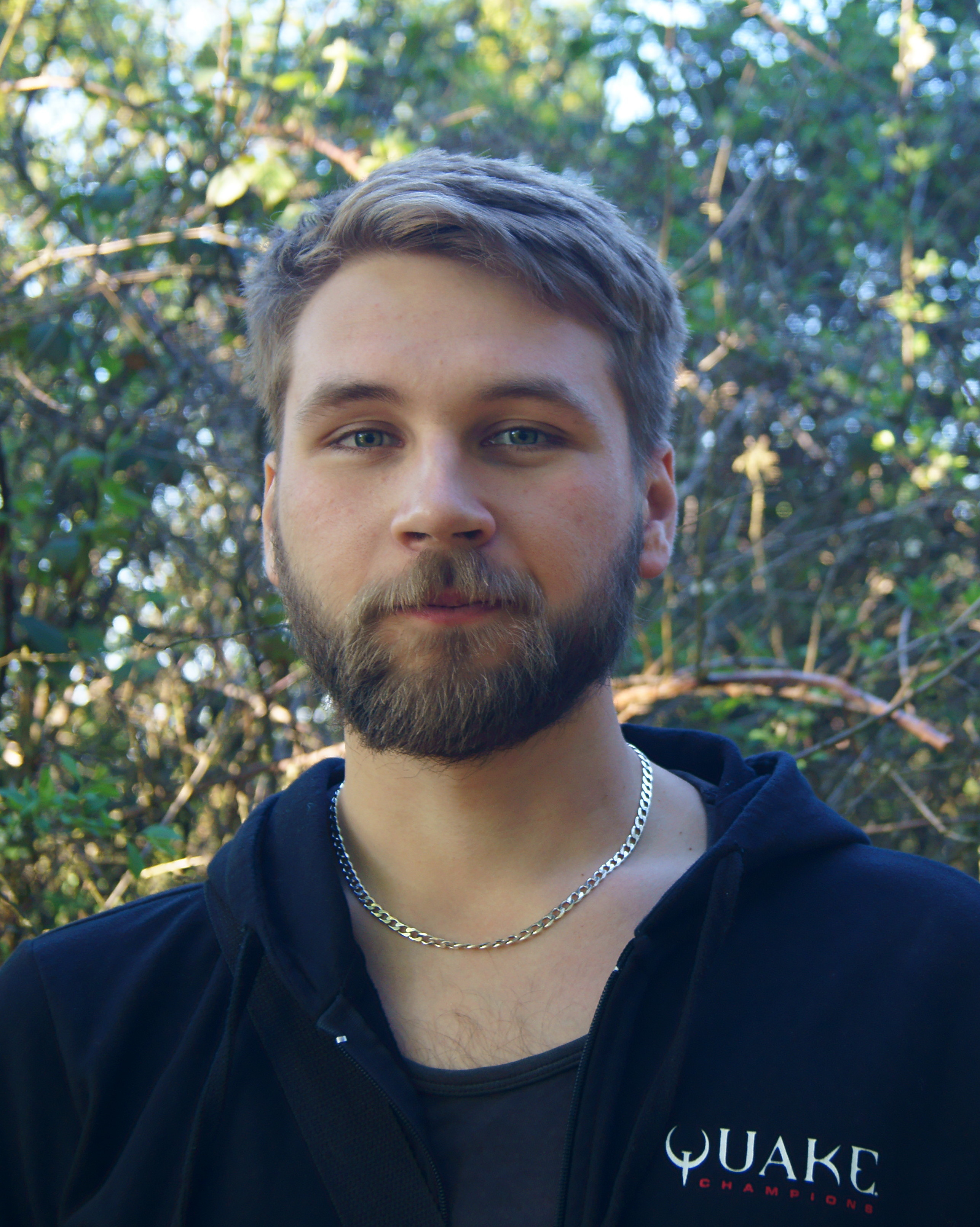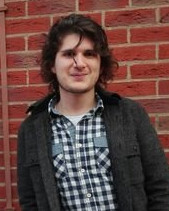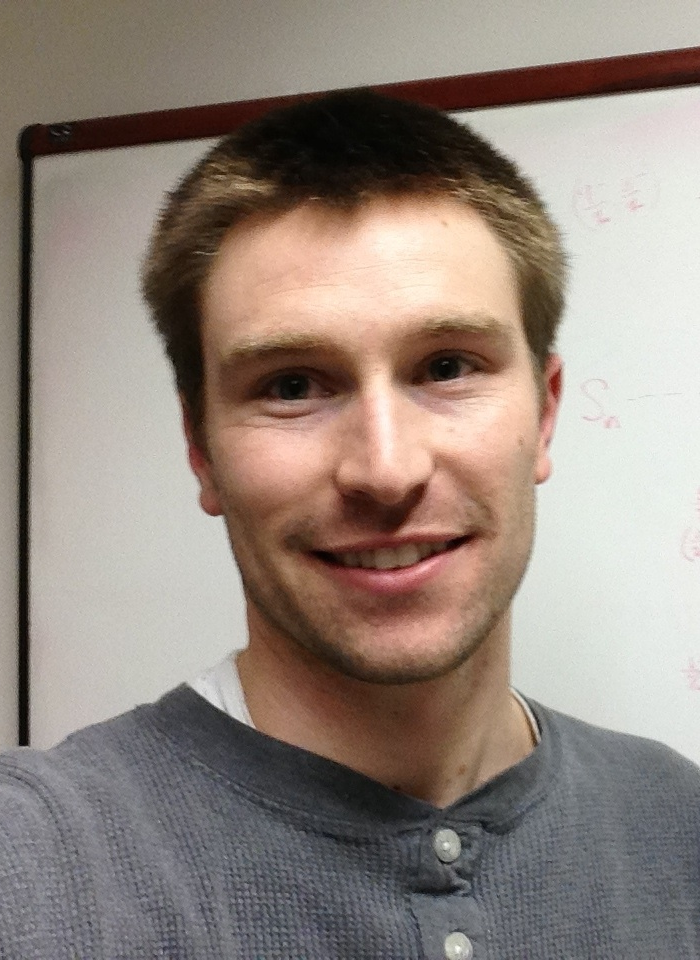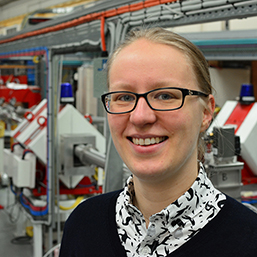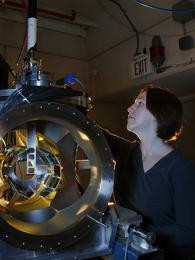Seminars Videos
<<< PAGE 1 >>> PAGE 3
At the University of Kentucky Accelerator Laboratory, we observed γ rays following inelastic scattering of fast neutrons from several candidates for neutrinoless double-beta decay (0νββ), with our recent measurements focusing on 76Ge [1], 136Xe [2], and other nuclei in these regions. From these measurements, low-lying excited states were characterized, 0+ states and their decays were identified, level lifetimes were measured with the Doppler-shift attenuation method, multipole mixing ratios were established, and transition probabilities were determined. The rate of 0νββ is approximately the product of three factors: the known phase- space factor for the emission of the two electrons, the effective Majorana mass of the electron neutrino, and a nuclear matrix element (NME) squared. The NMEs cannot be determined experimentally and, therefore, must be calculated from nuclear structure models. A focus of our recent measurements has been on providing detailed nuclear structure data to guide these model calculations in the Ge region, and a procedure for future work, which will lead to meaningful data for constraining calculations of NMEs, is suggested. This material is based upon work supported by the U.S. National Science Foundation under grant no. PHY-1913028. [1] S. Mukhopadhyay, et al., Phys. Rev. C 95, 014327 (2017). [2] E.E. Peters, et al., Phys. Rev. C 98, 034302 (2018). |
Transcript (auto generated) | ||
The pygmy dipole resonance (PDR) is a nuclear phenomenon which is associated with the movement of the ‘neutron skin’ of a nucleus against an isospin saturated proton-neutron core. The nature of the PDR is of particular interest due to its importance in many areas of nuclear and astrophysics. Current experimental techniques used to study this phenomenon produce inconsistent results. This is mostly due to the unknown branching behaviour of the Jπ =1− levels, which form the PDR. The nuclear resonance fluorescence (NRF) technique, which is widely used to study low-lying E1 strength in stable nuclei, loses decay branches to lower-lying excited states to the atomic background. The latter effect leads to underestimated values of E1 strength of the PDR. Recently it was realised that electric dipole levels associated with the PDR could also be excited following the β decay of certain nuclei. The novel approach of using β decay to populate high-lying 1− states allows the extraction of branching transitions previously not resolved in NRF, which will recover missing E1 strength associated with the PDR. In this work, the nature of the high-lying final levels of the 96Ygs beta decay, one of the three most important contributors to the high-energy reactor antineutrino spectrum, has been investigated in high-resolution gamma-ray spectroscopy following the beta decay as well as in a campaign of inelastic photon scattering experiments. The combined data represents a comprehensive approach to the wavefunction of the 1− levels below the Qbeta value (7.1 MeV), which are also studied in the Quasiparticle Phonon Model. The calculations reveal that the components populated in beta decay contribute only with small amplitudes to the complex wavefunction of these 1− levels. A comparison of the beta decay results to data from total absorption gamma-ray spectroscopy demonstrates that high-resolution spectroscopy using modern detector arrays is capable to resolve the pandemonium effect. |
Transcript (auto generated) | ||
Discrete symmetries provide a powerful means of classifying and constraining models in nuclear and particle physics, including the Standard Model. Although the Standard Model predicts finite values for CP-violating electromagnetic moments (both for fundamental particles and for composite systems), today's experiments are insufficiently sensitive -- by several orders of magnitude -- to test these predictions. Nevertheless, experimental limits consistent with zero have played an important role in constraining Standard Model parameters and extended models with new sources of CP violation. In particular, searches for permanent electric dipole moments (EDMs) test the Standard Model at high precision, provide diagnostic power for new sources of CP violation, and connect deeply to the symmetry-breaking mechanisms required for baryogenesis. I will survey the main target systems and experimental techniques that are employed in modern EDM measurements, with some emphasis on neutrons and the nuclei of diamagnetic atoms. I will also discuss the phenomenological interpretation of EDM limits, and in particular the "global analysis", or joint constraints, that are enabled by multiple experiments in complementary systems. |
Transcript (auto generated) | ||
Precise knowledge of the free neutron lifetime, τn, is required to test the consistency of the standard model and uncertainties in τn dominate those in predicted primordial 4He abundance from Big Bang nucleosynthesis. Presently, there exist two classes of experiments that have successfully made measurements of τn. The `Beam' class involves measuring the activation of cold neutron beams and the `Bottle' class uses storage (material, magnetic and/or gravitational) to trap neutrons and measure the rate of decay during storage. However, there currently exists a 4σ disagreement between the `beam' and `bottle' measurements. We have developed a new technique for using space-based neutron spectroscopy measurements to determine τn. Under this technique the change in planet-originating neutron flux with planet-to-spacecraft distance yields a measure of τn. Here, we will present an analysis of data from the neutron spectrometer on NASA's MESSENGER and Lunar Prospector missions as a proof-of-principle demonstration of a space-based τn measurement. Here I discuss the basis of the technique, statistical and systematic errors of the measurement, and presented the results that we have so far. |
Transcript (auto generated) | ||
By means of a full restoration of particle-number (A), spin (S), and isospin (T) broken symmetries of paired mean-field quasiparticle states, we show that proton-neutron (pn) and like-nucleon pair condensates coexist. We use the Thouless representation for these states, parametrised by the normalised isovector (T=1) and isoscalar (T=0) pair amplitudes. Using a simple and well-known SO(8) pairing Hamiltonian, whose exact solutions are known, we minimize the energy calculated with the symmetry-restored paired states, that is, we use the so-called variation after projection (VAP) approach. The results obtained using this method are strikingly accurate in comparison with the exact results, and for all interaction strengths the isovector and isoscalar pairs coexist, in opposition of the pure mean-field approach. This study suggests that further work on properties of proton-neutron pairing should be carried out within the VAP approach to mean-field pairing methods. |
 Transcript (auto generated) |
||
Atomic nuclei with certain combinations of proton and neutron numbers can adopt reflection-asymmetric or octupole-deformed shapes at low excitation energy. These nuclei present a promising avenue in the search for a permanent atomic electric dipole moment — the existence of which has implications for physics beyond the Standard Model of particle physics. Theoretical studies have suggested that certain thorium isotopes may have large octupole deformation. However, due to experimental challenges, the extent of the octupole collectivity in the low-energy states in these thorium nuclei has not yet been demonstrated. Here, we report measurements of the lifetimes of low-energy states in the actinide nuclei 228Th (Z = 90) and 234U (Z = 92) with a direct electronic fast-timing technique, the mirror symmetric centroid difference method. From lifetime measurements of the low-lying Jπ = 1- and Jπ = 3- states, the E1 transition probability rates and the intrinsic dipole moments are extracted. Through comparisons with theoretical calculations, we have been able to estimate the extent of the octupole deformation of these nuclei. This study indicates that the nuclei 229Th and 229Pa (Z = 91) may be good candidates for the search for a permanent atomic electric dipole moment. |
Transcript (auto generated) | ||
Over the past decade, developments in effective field theory and many-body theory have pushed the limits of ab initio calculations from the p-shell (A~10) up to A=100. This means that the structure of medium-mass nuclei can be addressed with a theory constrained in the few-body sector (e.g. up to A=4), with no additional parameters needed. I will present a conceptual introduction to modern ab initio theory, followed by some highlights from the past few years, including a quantitative understanding of the gA quenching problem in beta decay, prediction of the proton and neutron drip lines, and some insights about the nuclear shell model. Finally, I will discuss some ongoing efforts to extend the reach of ab initio calculations beyond A=100, and to provide meaningful theoretical error bars. |
Transcript (auto generated) | ||
Nuclei with a closed-shell configuration for neutrons and protons exhibit low-energy excitations with angular momentum J=3 and negative parity. Such excitations are associated with nuclear shapes that break reflection symmetry and, in particular, with pear-like or octupole shapes. In this talk the shell-model structure of octupole excitations is discussed and the question of their phonon-like behaviour is addressed. It is shown that with some simple assumptions concerning single-particle energies and two-body interactions octupole phonons obey universal symmetry properties. The results of this schematic approach are compared with those of a realistic shell-model calculation for 208Pb. Extensions to odd-mass and semi-magic nuclei are also discussed. |
Transcript (auto generated) | ||
New experimental data obtained from gamma-ray tagged one-neutron and one-proton knockout from both self-conjugate Z=N=28 56Ni and the Z=27, one-hole nucleus 55Co are presented. Both experiments were performed at the National Superconducting Cyclotron Laboratory using the combined SeGA+S800 setup. Experimental results are compared to large-scale-shell-model (LSSM) calculations in the full fp-model space employing charge-dependent contributions. For the mirror pair 55Co and 55Ni, a mirror asymmetry for the partial cross sections leading to the two lowest 3/2- states was identified as well as a significant difference in the E1 decays from the first excited 1/2+ state to the same two 3/2- states. The mirror asymmetry in the partial cross sections cannot be reconciled with the present shell-model picture of nuclei close to doubly magic 56Ni or small mixing introduced in a two-state model. The observed mirror asymmetry in the E1 decay pattern, however, points at stronger mixing between the two lowest 3/2- states in 55Co than in its mirror 55Ni. Based on a comparison of new one-nucleon knockout data and LSSM calculations, a candidate for the sought-after T=1, Tz = 0, Jπ = 6+ state in 54Co is proposed. Furthermore, possible isospin-symmetry breaking in the A=54, T=1 triplet is studied by calculating the experimental c coefficients of the isobaric mass multiplet equation (IMME) up to the maximum possible spin J=6 expected for the (1f7/2)-2 two-hole configuration relative to 56Ni. The experimental quantities are compared to the theoretically predicted c coefficients from LSSM calculations using two-body matrix elements obtained from a realistic chiral effective field theory potential at next-to-next-to-next-to-leading order (N3LO). |
Transcript (auto generated) | ||
Laser spectroscopy provides model-independent access to important probes of nuclear structure. Through measurements of the atomic hyperfine structure, magnetic dipole and electric quadrupole moments, as well as nuclear spins and nuclear charge radii can be obtained. In this talk, I will show state-of-the-art measurements of nuclear charge radii of exotic copper isotopes, and how they can be used to test equally cutting-edge nuclear theory. The most exotic isotope that was studied, 78Cu, was produced at a rate of only 20 ions per second. The measurements thus required considerable improvements to optical spectroscopy techniques, which I will explain and put into context. I will also discuss the present status of the field, and possible new directions for future research. |
Transcript (auto generated) | ||
Where and how multinucleon halos form in exotic nuclei is key to understanding nuclear structure at the limits of existence. The nature and presence of halo structures are intrinsically linked to deformation and shell evolution, and the possibility of dineutron correlations in neutron-rich matter. Here, we present an experimental investigation of the halo structure of the heaviest bound isotope of boron, 19B. Little is known about this nuclide. It is known to be bound with a very low two neutron separation energy and an enhanced interaction cross-section, making it a possible 2n Borromean halo nucleus. However, being also weakly-bound to four neutron removal, 19B might also have a 4n halo or have a neutron skin. Using the SAMURAI setup at RIKEN RIBF, we performed exclusive measurements of the Coulomb dissociation of 19B into 17B and two neutrons in collisions with Pb 220 MeV/nucleon. The reconstructed relative energy spectrum is significantly enhanced just above the two-neutron decay threshold with an electric dipole transition strength of B(E1) = 1.64 ± 0.06 (stat) ± 0.12 (sys) e2fm2 being deduced for relative energies below 6 MeV. This shows that 19B has a prominent two-neutron halo. When we compare the Coulomb dissociation relative energy distribution to three-body model calculations, we found good agreement when the two-neutron separation energy S2n was near 0.5 MeV. Our calculations indicate that the valence neutrons have a substantial s-wave configuration and exhibit a dineutron-like correlation. |
Transcript (auto generated) | ||
Researches on neutrinoless double beta decay have crucial implications on particle physics, cosmology and fundamental physics. It is likely the most promising process to access the absolute neutrino mass scale. To determine quantitative information from the possible measurement of the 0νββ decay half-lives, the knowledge of the Nuclear Matrix Elements (NME) involved in such transitions is mandatory. The use heavy-ion induced double charge exchange (DCE) reactions as tools towards the determination of information on the NME is one of the goals of the NUMEN and the NURE projects. The basic point is that there are a number of similarities between the two processes, mainly that the initial and final state wave functions are the same and the transition operators are similar, including in both cases a superposition of Fermi, Gamow-Teller and rank-two tensor components. The availability of the MAGNEX magnetic spectrometer for the measurements of the very suppressed DCE reaction channels is essential to obtain high resolution energy spectra and accurate cross sections at forward angles including zero degree. The measurement of the competing multi-nucleon transfer processes allows to study their contribution and to constrain the theoretical calculations. An experimental campaign is ongoing at INFN-Laboratori Nazionali del Sud (Italy) to explore medium-heavy ion induced reactions on target of interest for 0νββ decay. Recent results obtained by the (20Ne,20O) and (18O,18Ne) DCE reactions and competing channels, measured for the first time using a 20Ne(10+) and 18O(8+) cyclotron beams at 15 AMeV will be presented at the seminar. |
Transcript (auto generated) | ||
Our understanding and measurement of photon quantum entanglement at the MeV scale is currently poor compared to the optical regime. At York we have recently adopted new quantum technologies for MeV photon detection which enable entanglement measurement at a new level of precision. The first quantum-entangled simulations of MeV photon transport and detection have also been developed. This opens up a wealth of new opportunities for fundamental tests and applications of entanglement at this energy scale. Our first results on the benefits of using the (previously neglected) entanglement information in PET medical imaging will be presented. |
Transcript (auto generated) | ||
Stars are the cauldrons where most of the chemical elements are created. In spite of the variety of stellar objects in the Universe, the distribution of heavy elements in stars (including our Sun) can be reproduced with only two neutron capture processes: the slow neutron capture process (s-process, with low neutron densities) and the rapid neutron capture process (r-process, with very large neutron densities). The s-process is active during the Asymptotic Giant Branch (AGB) phase of low and intermediate mass stars. The r-process is thought to work during the explosive phases at the end of massive star evolution, whether in a single object evolution (Magnetars) or in a binary merger event (Neutron Stars Mergers, NSMs, and/or Black Hole-Neutron Star Mergers). In the epoch of multi-messenger astrophysics, scientists cannot limit their studies to the nucleosynthesis occurring in low mass stars or highly compact interacting objects only, but they have to deal with them at the same time. I will present some recent improvements in our theoretical knowledge of both classes of objects, with special attention to the adopted nuclear inputs. |
Transcript (auto generated) | ||
Correlations—intended as multiple-nucleon mechanisms that cannot be modelled by a pure man-field potential—are the backbone of our deeper understanding of atomic nuclei. They are manifest in the fragmentation of the spectral strength which is encountered in one-nucleon addition and removal measurements. In recent years, we have advanced high-performance computational many-body techniques, such as propagator theory, that can be used to compute the spectral function but that also allow meaningful predictions of radii and binding energies up to masses of A~100. This talk will review such progress and aim at giving a broader perspective of ab initio theory, in which large scale computations are not only used to benchmark the theories of nuclear forces but they can also help to constrain our insight about nuclear phenomena. I will further discuss some cases in which the knowledge fo the spectral function is important to predict, e.g., the interplay between structure and reactions and the response to neutrinos under the wide range of energies relevant to oscillation experiments. |
|||
An Optical TPC detector has been used in combination with quasi-monoenergetic gamma beams at the HIgS facility (Duke University) to study alpha clustering and key reactions in nuclear astrophysics. The 16O(g,a) and the 12C(g,3a) reactions were studied. The inverse of the former reaction is crucial for determining the carbon-to-oxygen ratio after helium burning, which plays a large part in dictating a star's evolution. Exploring the reaction with inverse kinematics, in conjunction with the TPC, has a number of key advantages. The current status of this work is given. The latter 12C(g,3a) reaction was studied to provide insight into the structure of the Hoyle state. The reaction populated the 10 MeV 2+ state in 12C, which is proposed as a collective excitation of the Hoyle state. Its various decay modes into three alpha-particles were studied and an upper limit for the direct 3 alpha decay branching ratio was calculated. Theoretical calculations were then used to extrapolate and calculate the corresponding branching ratio for the Hoyle state, which was found to be lower than expected for certain alpha cluster configurations. |
|||
78Ni, which has 28 protons (Z=28) and 50 neutrons (N=50) is one of the most intriguing isotopes in the chart of nuclei. It is the most neutron-rich, exotic “doubly magic” nucleus that can be produced at present state-of-the-art facilities. In this work, excited states of 78Ni have been investigated at the RIBF (Radioactive Isotope Beam Factory, Japan) by measuring their de-excitation gamma rays after one- and two-proton knock-out reactions from 79Cu and 80Zn beams. As a result, at least two candidates for the excited 2+ states and other higher-lying states were found. Though the doubly magic nature was confirmed by its high excitation energy, the existence of the multiple 2+ states cast a question about the nature of the shell closure in 78Ni and reveals the possibility for shape coexistence. The deduced level scheme of excited states was compared with several state-of-the-art theoretical predictions interpreting the structure of 78Ni. Some of the calculations agree with the experimental result and anticipate the shell gaps vanish beyond 78Ni. Besides the gamma-ray analysis, particularly small inclusive cross-sections of 79Cu(p,2p)78Ni and 80Zn(p,3p)78Ni were observed compared to the neighbouring nuclei. To investigate this phenomenon, the cross-sections to the excited states and the ground state deduced experimentally were compared with reaction theory based on a DWIA formalism. In this talk, firstly, I will introduce our experimental techniques applied in this research, especially about the newly developed device, MINOS, comprised of a 10 cm-thick liquid hydrogen target with a recoil proton tracking system. Then, the experimental results are discussed in comparison to the several theoretical predictions and their interpretations to understand the shape-coexisting phenomena arising in this region. R.Taniuchi et al., Nature 569, 53-58 (2019) |
|||
Neutron-rich nuclei, close to mass number A ~ 100, display a variety of fascinating shape phenomena including exotic non-axial (triaxial) shapes and shape coexistence. These phenomena have been predicted by a number state-of-the-art theoretical approaches and corroborated with evidence from energy systematics. However, with the advent of new radioactive beam facilities and equipment and the renaissance of Coulomb-excitation studies, powerful new possibilities of studying these shapes directly are now available. In this talk, I will focus on complementary Coulomb-excitation and decay studies recently performed at Argonne National Laboratory’s CARIBU facility. The first results, indicated that the exotic 110Ru isotope possessed a non-axial ground state however new studies, aided by the EBIS charge breeder and a number of other experimental improvements, far more in-depth conclusions to be drawn both for 110Ru and neighbouring nuclei in this shape-shifting region. Here the new data will be presented focusing on the new information gleaned from the most recent studies and finally the possibilities for studying the most exotic, non-axial, cases in the near-future will be assessed. Finally, shifting focusses, I will briefly discuss some recent developments with the Argonne Gas-Filled Separator (AGFA) including perspectives for future experiments and comparisons with vacuum separators. |
|||
A recent re-analysis of Livermore and Saclay (γ,xn) photo-neutron data has suggested that systematic effects may have been introduced in these data as a result of the manner in which the data were processed to account for the neutron multiplicity of the events. Furthermore, discrepancies have been observed between equivalent photo-absorption cross sections for some neodymium and samarium isotopes obtained using (p,p') data taken at iThemba LABS and the corresponding direct (γ,xn) measurements obtained at Saclay. A measurement of two reference cases, 90Zr and 159Tb (both of which have been measured at Livermore and Saclay), will be useful to validate the agreement between (p,p') and direct photo-absorption data and, furthermore, to ascertain whether the processing method of the (γ,xn) data could explain the observed discrepancies. The proposed measurements of 90Zr and 159Tb will be presented along with a discussion on the discrepancies observed between (p,p') and (γ,xn) data. |
|||
The search for sterile neutrinos is among the brightest possibilities in our quest for understanding the microscopic nature of dark matter in our universe. Sterile neutrinos - unlike the active neutrinos in the SM - do not interact with normal matter as they move through space, and as such must be observed via their mass-generated effects that result from momentum conservation with SM particles. One way to observe these momentum recoil effects experimentally is through high-precision measurements of electron-capture (EC) nuclear decay, where the final state only contains the neutrino and a recoiling atom. This approach a powerful method for BSM neutrino mass searches since it relies only on the existence of a heavy neutrino admixture to the active neutrinos, which is a generic feature of neutrino mass mechanisms, and not on the model-dependent details of their interactions. In this talk, I will discuss our first measurements in the Beryllium EC STJ (BeEST) experimental program, which uses the decay-momentum reconstruction technique to precisely measure the 7Li recoil spectrum following the EC decay of 7Be implanted into sensitive superconducting tunnel junction (STJ) radiation detectors. |
|||
The first physics experiments using the ISOLDE Solenoidal Spectrometer (ISS) have both been a success, a new device based on the HELIOS concept so successfully employed at Argonne National Laboratory. This seminar will present the results from one of the first two measurements made before CERN’s Long Shutdown 2 (LS2) with the ISS used in an early exploitation mode, using the silicon array from Argonne’s HELIOS spectrometer. The 28Mg(d,p)29Mg reaction was measured to probe single-particle structure near the island of inversion and towards the neutron drip line. In particular, this measurement focused on identifying the negative-parity intruder states and investigating how they evolve in this region of the nuclear chart. These data are compared to shell-model calculations using new effective interactions that aim at better describing cross-shell interactions in this region of the nuclear chart. The impact of both neutron-proton interactions and the geometry of a finite well on the evolution of single-particle structure in this region have been investigated using the data from this measurement. Current and future developments for ISS will also be presented. These include a new advanced silicon array and a fast-counting recoil detector for identifying reaction products. An array of fission-fragment detectors has also been developed in order to study fission in exotic nuclei, via measurements of transfer-induced fission. Some time will be spent during this seminar describing this new technique. |
|||
This talk will address recent experimental and theoretical progress regarding the appearance of reflection-asymmetric nuclear shapes in the heavy actinide region of the nuclear chart (Z≈88, N≈136) which has greatly accelerated in the last decade. Specifically we refer to nuclei that adopt pear shapes (or alternatively avocado-like shapes) near to the ground state. In even-even nuclei this phenomenon is evident by the presence of low-lying excited states with angular momentum J = 3 ħ and negative-parity. Such nuclei are regarded as susceptible to octupole deformation. Some nuclei appear to oscillate between a symmetric and an asymmetric shape (octupole vibrational) while others appear permanently octupole deformed. In addition, reflection-asymmetry in odd-N or odd-Z actinides has important implications in the search for the atomic electric dipole moment (EDM), considered an important test of physics beyond the standard model. What is the microscopic origin of reflection-asymmetry and how are these shapes inferred in experiments? A variety of spectroscopic techniques employed to study the octupole degree-of-freedom in nuclei will be presented. |
|||
A significant part of our quest to understand the origin of the elements involves constraining the nuclear reaction rates that influence stellar nucleosynthesis. For many nucleosynthesis processes – in particular those occurring in stellar explosions or high-temperature quiescent burning – the important reactions are dominated by resonant capture into particle-unbound excited states in the compound nucleus. Determining the strengths of these reactions through either direct or indirect measurements is thus a key focus of many measurements. One possible technique for indirectly determining resonance partial widths is recoil-gated transfer reactions performed in inverse kinematics. In the first part of the talk, I will discuss the results of a recent set of measurements at the Texas A&M University Cyclotron Institute which used the 22Ne(6Li,d)26Mg reaction to determine the neutron and alpha partial widths of key resonances in the 22Ne(alpha, n)25Mg reaction – an important neutron source for the s-process. I will also briefly discuss future directions of this program, including a planned measurement to determine the alpha partial width of the key 500 keV resonance in 15O(alpha, gamma)19Ne. In the second part of the talk, I will shift gears and present the latest results from a project to develop a next-generation neutron detector using the p-Terphenyl organic scintillator material – a detector which will ultimately be incorporated into future nucleosynthesis-oriented reaction measurements. This new detector promises improved efficiency and resolution compared to existing devices and is capable of discriminating incident neutron and gamma-ray radiation without the use of volatile liquid scintillator materials. If time permits, I will briefly discuss plans to incorporate this new detector into future experiments aimed at constraining stellar nucleosynthesis through (d,n) measurements at Texas A&M and the TRIUMF/ISAC facility. |
|||
Our understanding of the r-process depends upon both the uncertainties in the astrophysical environments and the uncertainties in the nuclear reactions taking place in those environments. The location of the r-process path on the chart of nuclides varies with the different astrophysical conditions, such as the "cold" r-process in neutron star mergers or the "hot" r-process in neutrino-driven winds from core-collapse supernovae, because of the differing temperatures, pressures, and neutron fluxes. Final, observable r-process abundances can vary significantly based on the conditions in which they were formed, but interpretation of this variation requires precise knowledge of the masses, decay modes, level structure, and neutron-capture cross sections of the nuclei along a particular r-process path. This talk will focus on several techniques being developed and employed to better constrain some of the nuclear physics parameters which contribute to improved predictions of r-process abundances. |
|||
The novel application of many-body methods has allowed for a vast expansion in the reach of ab initio nuclear theory up to, for example, 100 Sn. I will describe recent Coulomb excitation experiments performed in the sd-shell on mirror pairs with a focus on one such technique, the valence space in-medium renormalization group, and its ability to reproduce electric quadruple transition strengths. I will demonstrate a consistent underprediction of strength and offer some explanation for the deficiency, while also demonstrating that the isospin asymmetric component of the strength is well-reproduced. Finally, I will briefly discuss some recent work on isobaric analogue state shifts in nuclei in light of the recent observation of ground-state inversion in the A=73 mirror pair. Work at LLNL was performed under contract DE-AC52-07NA27344. |
|||
Direct reactions at energies of a few MeV per nucleon above the Coulomb barrier are a powerful probe of nuclear structure. With radioactive ion beams, these reactions are carried out in inverse kinematics. In this approach, the spectrum of outgoing ions suffers a significant compression at forward center-of-mass angles, where cross sections are large. This artifact of the kinematics can be overcome using a solenoidal spectrometer, allowing for reaction studies with good resolution. This technology was pioneered at Argonne National Laboratory a decade ago, with the development of HELIOS. It inspired the UK-led development of the ISOLDE Solenoidal Spectrometer (ISS) at CERN and plans for a next-generation device for use with reaccelerated beams at the Facility for Rare Isotope Beams, FRIB, called SOLARIS. The advantages of this technique will be discussed along with a physics highlights from HELIOS and ISS, including recent results on the exploration of a previously uncharted region of the nuclear landscape beyond the N = 126 closed shell. An overview of short-term plans for the use of SOLARIS will be given. |
|||
Data science and machine learning are changing the way we look at data. In my talk I'll apply some of these methods to well known nuclear quantities: nuclear masses. Over several decades, the ambition of nuclear theorists has been to develop a model to describe the evolution of binding energies in function of neutron and proton number. From the simple Bethe-Weitzsacker to the more complex Duflo-Zuker all models obtain a "reasonable" accuracy, but clearly several order of magnitude worse than the most accurate experimental measurements. Is it possible to do better using machine learning methods? In my talk, I will present some of the tools studied in York to answer this question. |


